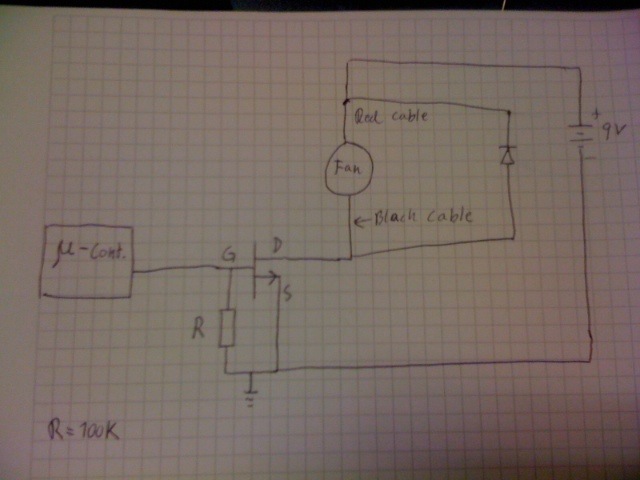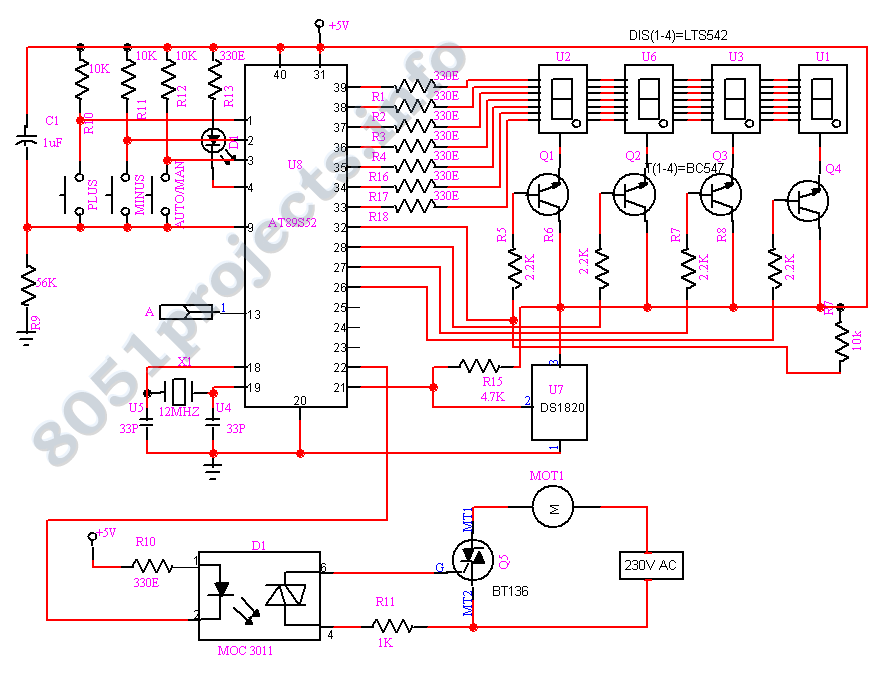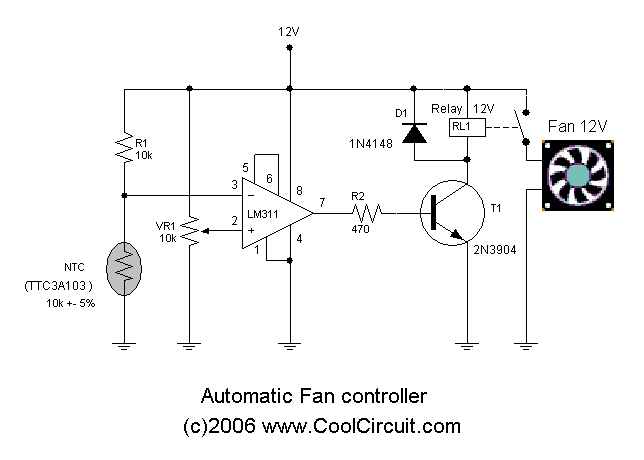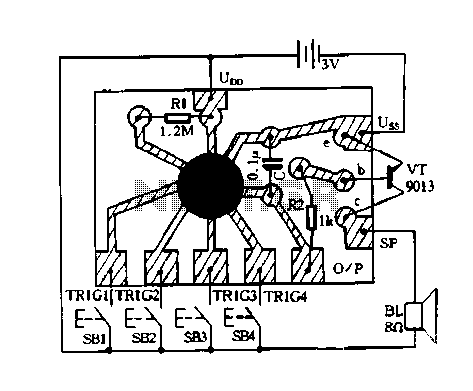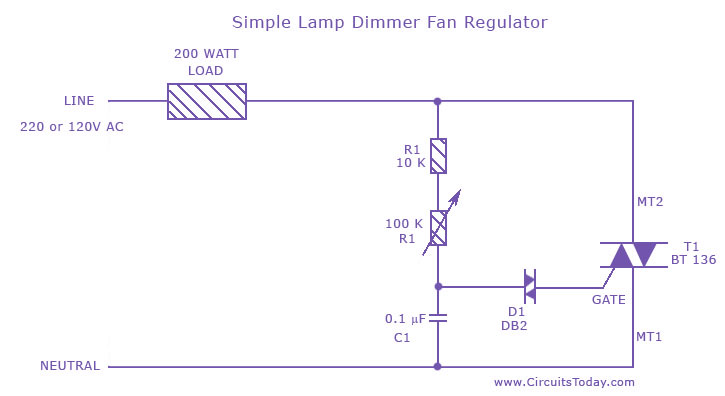
Changing Fan Speeds

The DC Brushless Fan is currently considered the optimal solution for cooling, although predictions suggest that computers may soon reach noise levels of 70 dBA, comparable to freeway traffic. In the future, liquid cooling may become prevalent; however, heat dissipation remains a critical concern. The DC Brushless Fan is integral to modern enclosures, prompting an investigation into its operational mechanics, as most heatsink fans (HSF) and case fans utilize this technology. Two fan types are commonly employed in computers: the axial fan and the blower fan. The axial fan is most effective in situations where the enclosure's static pressure is low, while the blower fan performs better under higher pressure conditions. However, the blower fan typically generates more noise for the same amount of airflow. Axial fans can be utilized in higher static pressure environments if arranged in a series configuration—one fan blowing air in and another expelling it. The static pressure within an enclosure can be influenced by airflow obstructions, and while calculating this pressure is challenging and costly, experimentation is essential for optimal results. The axial fan is highlighted due to its suitability for most enclosures and its lower noise output. Currently, fan speed is being varied to reduce noise while maintaining adequate cooling. Larger fans or multiple fans operating at lower speeds can achieve the same airflow as smaller, faster fans, resulting in reduced noise levels. The DC Brushless Fan comes in two designs: sleeve bearing and ball bearing fans. While the ball bearing fan is slightly more expensive, it offers advantages such as a longer lifespan in temperatures above 20°C and the ability to be mounted in any orientation. In contrast, sleeve bearing fans should only be mounted vertically and are not suitable for exhaust applications due to their reliance on lower temperatures. The primary advantage of sleeve bearing fans is their lower initial noise and lower cost. The DC Brushless Fan operates with a permanent magnet attached to the fan blades, which is rotated by pulsed electromagnet coils. This process is typically managed by integrated circuits (ICs) that utilize feedback from a Hall effect sensor to generate high-speed pulses, directing them appropriately. A simplified schematic of the fan's circuitry includes an IC, a Hall effect sensor, and several discrete components, which enhance reliability and connectivity. The specific IC used in this fan is the Sanyo LB 1860M, which facilitates speed control. The Hall effect sensor, located above the center of the circuit, provides feedback on the fan's rotational speed. This feedback circuit regulates the pulse frequency applied to the coils, while a thermistor helps control the fan speed.
The DC Brushless Fan is a sophisticated cooling solution widely adopted in computer systems due to its efficiency and low noise operation. The design incorporates a permanent magnet and electromagnet coils, allowing for precise control of the fan's speed and airflow. The axial fan configuration is particularly advantageous in environments with low static pressure, making it suitable for most computer cases. In contrast, blower fans are better suited for high-pressure applications but at the cost of increased noise levels.
The use of the Sanyo LB 1860M IC in conjunction with the Hall effect sensor enables effective speed regulation, ensuring that the fan operates optimally according to thermal demands. The feedback mechanism provided by the Hall effect sensor is critical for maintaining consistent performance, adjusting the pulse frequency to match the cooling requirements of the system. The inclusion of discrete components in the schematic enhances the reliability of the fan, ensuring stable operation and connection to the power supply and control circuitry.
Overall, the DC Brushless Fan represents a balance between performance and noise reduction, making it an essential component in modern computing environments where thermal management is crucial. The ability to vary fan speed based on temperature readings allows for a dynamic response to changing thermal conditions, contributing to the longevity and stability of computer components.The DC Brushless Fan is the best solution for now, but some predictions are that computers will soon be at 70dBA or the same noise level of freeway traffic. In the future we all may be liquid cooling but the heat has to go somewhere. Since the DC Brushless Fan is the mainstay of enclosures now, I researched how it actually operates as most HSF and Case fans are of this type.
There are two types that are used in computers these days. They are the axial fan and the blower fan. The axial fan works best where the static pressure of the enclosure is not too great. The blower works better when the pressures are higher. The tradeoff is that the blower has a higher noise figure for the same air movement. The axial fan can be used in enclosures with higher static pressures if they are used in series, one blowing in and one blowing out. The static pressure of an enclosure is changed by the obstructions in the airflow. From my research it seems to be almost impossible to calculate, and expensive to empirically determine.
In other words, experimentation is the key to good results. I will talk about the axial fan as it is adequate for most enclosures, and has lower noise. These days we are varying the speed of our fans to decrease noise while adequately cooling our enclosures. We can achieve the same airflow by using larger fans or more fans at a lower speed, while the noise stays below that of smaller fans at higher speed.
Let us start by examining the DC Brushless Fan. Today there are two types of fans generally used. One is a sleeve bearing fan and the other is a ball bearing fan. The ball bearing fan is slightly more expensive than the sleeve bearing fan. The advantages of the ball bearing fan are that it has a longer lifetime when used in an ambient temperature above 20C. It can also be mounted both vertically and horizontally whereas the sleeve bearing fan can only be mounted vertically.
A sleeve bearing fan cannot be used for an exhaust fan as its lifetime depends on low temperatures. The only advantage of a sleeve bearing fan is a slightly lower bearing noise in its` early lifetime and of course cost. The DC Brushless Fan has a permanent magnet mounted on the fan blades. This is caused to rotate by the action of electromagnet coils that are pulsed so that the electromagnetism rotates and influences the permanent magnet.
Generally this is done with IC`s these days that have the feedback of a Hall effect sensor. This generates the high-speed pulses and directs them through the feedback to the right place. I have included a simplified schematic: You will notice that the entire board consists of an IC, a Hall effect sensor and a few discreet components. All of the discreet components are for reliability and connection to the outside world. The IC in this fan is a Sanyo LB 1860M. This IC allows for speed control. The input of a Hall effect sensor provides the feedback of the rotating speed; it is on the right just above center, a black rectangle beside the rectifier.
The Hall effect feedback circuit determines the frequency of the pulses applied to the coils. The thermistor controls the speed 🔗 External reference
The DC Brushless Fan is a sophisticated cooling solution widely adopted in computer systems due to its efficiency and low noise operation. The design incorporates a permanent magnet and electromagnet coils, allowing for precise control of the fan's speed and airflow. The axial fan configuration is particularly advantageous in environments with low static pressure, making it suitable for most computer cases. In contrast, blower fans are better suited for high-pressure applications but at the cost of increased noise levels.
The use of the Sanyo LB 1860M IC in conjunction with the Hall effect sensor enables effective speed regulation, ensuring that the fan operates optimally according to thermal demands. The feedback mechanism provided by the Hall effect sensor is critical for maintaining consistent performance, adjusting the pulse frequency to match the cooling requirements of the system. The inclusion of discrete components in the schematic enhances the reliability of the fan, ensuring stable operation and connection to the power supply and control circuitry.
Overall, the DC Brushless Fan represents a balance between performance and noise reduction, making it an essential component in modern computing environments where thermal management is crucial. The ability to vary fan speed based on temperature readings allows for a dynamic response to changing thermal conditions, contributing to the longevity and stability of computer components.The DC Brushless Fan is the best solution for now, but some predictions are that computers will soon be at 70dBA or the same noise level of freeway traffic. In the future we all may be liquid cooling but the heat has to go somewhere. Since the DC Brushless Fan is the mainstay of enclosures now, I researched how it actually operates as most HSF and Case fans are of this type.
There are two types that are used in computers these days. They are the axial fan and the blower fan. The axial fan works best where the static pressure of the enclosure is not too great. The blower works better when the pressures are higher. The tradeoff is that the blower has a higher noise figure for the same air movement. The axial fan can be used in enclosures with higher static pressures if they are used in series, one blowing in and one blowing out. The static pressure of an enclosure is changed by the obstructions in the airflow. From my research it seems to be almost impossible to calculate, and expensive to empirically determine.
In other words, experimentation is the key to good results. I will talk about the axial fan as it is adequate for most enclosures, and has lower noise. These days we are varying the speed of our fans to decrease noise while adequately cooling our enclosures. We can achieve the same airflow by using larger fans or more fans at a lower speed, while the noise stays below that of smaller fans at higher speed.
Let us start by examining the DC Brushless Fan. Today there are two types of fans generally used. One is a sleeve bearing fan and the other is a ball bearing fan. The ball bearing fan is slightly more expensive than the sleeve bearing fan. The advantages of the ball bearing fan are that it has a longer lifetime when used in an ambient temperature above 20C. It can also be mounted both vertically and horizontally whereas the sleeve bearing fan can only be mounted vertically.
A sleeve bearing fan cannot be used for an exhaust fan as its lifetime depends on low temperatures. The only advantage of a sleeve bearing fan is a slightly lower bearing noise in its` early lifetime and of course cost. The DC Brushless Fan has a permanent magnet mounted on the fan blades. This is caused to rotate by the action of electromagnet coils that are pulsed so that the electromagnetism rotates and influences the permanent magnet.
Generally this is done with IC`s these days that have the feedback of a Hall effect sensor. This generates the high-speed pulses and directs them through the feedback to the right place. I have included a simplified schematic: You will notice that the entire board consists of an IC, a Hall effect sensor and a few discreet components. All of the discreet components are for reliability and connection to the outside world. The IC in this fan is a Sanyo LB 1860M. This IC allows for speed control. The input of a Hall effect sensor provides the feedback of the rotating speed; it is on the right just above center, a black rectangle beside the rectifier.
The Hall effect feedback circuit determines the frequency of the pulses applied to the coils. The thermistor controls the speed 🔗 External reference

